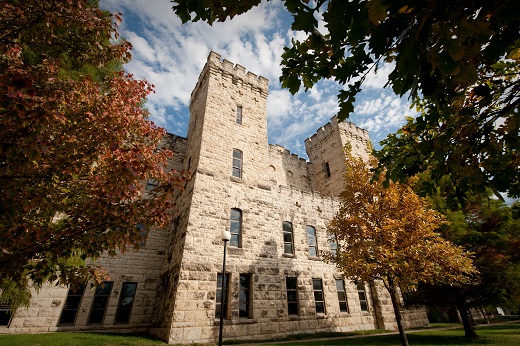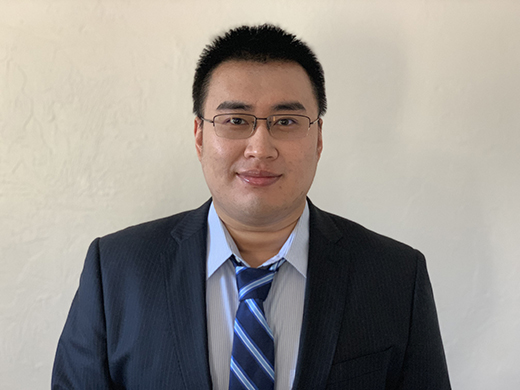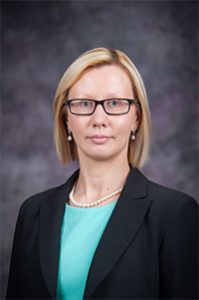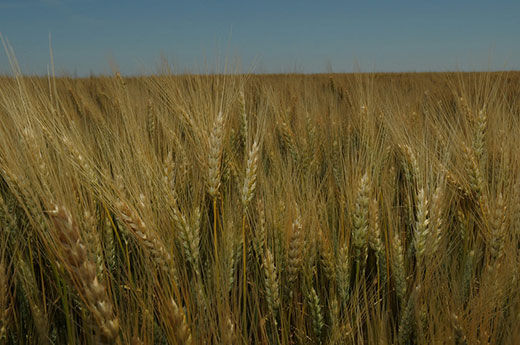10/21/20
K-State Current - October 21, 2020
K-State Current is a weekly news update for the Kansas Board of Regents to apprise the Regents on a few of the many successes and achievements made by K-State faculty, staff and students.
K-State News
EPA extends funding of university's pollution prevention programs
 A $350,000 grant from the U.S. EPA Office of Chemical Safety and Pollution Prevention will continue the Kansas State University Pollution Prevention Institute's partnerships with Kansas companies and government entities in pollution prevention efforts while providing students with real-world environmental and engineering experience.
A $350,000 grant from the U.S. EPA Office of Chemical Safety and Pollution Prevention will continue the Kansas State University Pollution Prevention Institute's partnerships with Kansas companies and government entities in pollution prevention efforts while providing students with real-world environmental and engineering experience.
With the grant, the Pollution Prevention Institute can advance its technical assistance program to Kansas companies through its pollution prevention intern program. For the past 15 years, the program has matched college engineering and environmental students with businesses seeking more efficient operations as well as reduced pollution and energy usage.
"During the two-year grant cycle, we will assist hundreds of Kansas businesses with pollution prevention recommendations for their operations," said Lynelle Ladd, pollution prevention specialist at the Pollution Prevention Institute and lead on the grant. "These efforts will reduce water usage, hazardous waste, air emissions and energy use while saving companies thousands of dollars."
The Pollution Prevention Institute is a part of Engineering Extension, the independent leader in technical assistance, training and outreach for the Carl R. Ice College of Engineering at Kansas State University.
"The Pollution Prevention Institute's program work is 100% grant-funded," said Nancy Larson, co-lead on the project and institute director. "Without this award from EPA, we would not be able to provide the free, expert technical assistance to Kansas companies, or hire experienced environmental staff to provide the assistance or run the program."
Other collaborators on the grant, all from K-State, include Arthur Fink, Leena Divakar and Allison Crowther, pollution prevention specialists with the institute; Trisha Moore, associate professor and Peggy and Gary Edwards Cornerstone teaching scholar in the Carl and Melinda Helwig Department of Biological and Agricultural Engineering; and LaVerne Bitsie-Baldwin, director of the Multicultural Engineering Program.
Host companies who would like a pollution prevention intern for summer 2021 can apply online now through Dec. 31 at sbeap.org/intern-program/business-app. Students enrolled in any Kansas university or college, junior year through doctoral level and majoring in engineering or environmental science, can apply online for an internship with the program now through Jan. 31, 2021, at sbeap.org/intern-program/intern-app.
NSF-funded project focuses on improved security of smart devices
 Smart homes, smart infrastructure, smart health and more — the list of applications embedded with sensors, software and other technologies for the purpose of connecting and exchanging data with other devices continues to drive the need for rigorous analysis of hardware and software critical to ensuring the safety and security of these systems.
Smart homes, smart infrastructure, smart health and more — the list of applications embedded with sensors, software and other technologies for the purpose of connecting and exchanging data with other devices continues to drive the need for rigorous analysis of hardware and software critical to ensuring the safety and security of these systems.
The National Science Foundation Division of Computing and Communication Foundations has awarded a $250,000, three-year grant to Xiaolong Guo, assistant professor in the Mike Wiegers Department of Electrical and Computer Engineering at Kansas State University, for further research in this area.
Guo will collaborate on the project "Property-specific Hardware-oriented Formal Verification Modules for Embedded Systems" with Tuba Yavuz, assistant professor of electrical and computer engineering at the University of Florida.
Things unique to their approach include a property-directed co-model extraction and a property-specific run-time validation process to achieve scalability and precision in detecting bugs due to hardware-software interactions.
"If successful, the research will deliver methodologies, automation tools and system-level benchmarks that will allow vendors to detect security and safety vulnerabilities in early stages," Guo said. "Its greatest impact will be on workforce training and broadening participation in formal methods and embedded-system security."
This will primarily be achieved through courses Guo will develop and teach in the Carl R. Ice College of Engineering, outreach events and collaborations with industry.
K-State Faculty Highlights
Sensory Science researchers have been selected as part of 5-year NIH grant
 Edgar Chambers, university distinguished professor, and Kadri Koppel, associate professor are part of a research team that has been selected to receive a 5-year, $500,000 NIH-grant for the project, “Predicting Human olfactory Perception from Molecular Structure”. Koppel will serve as the primary investigator with Chambers as the co-primary investigator.
Edgar Chambers, university distinguished professor, and Kadri Koppel, associate professor are part of a research team that has been selected to receive a 5-year, $500,000 NIH-grant for the project, “Predicting Human olfactory Perception from Molecular Structure”. Koppel will serve as the primary investigator with Chambers as the co-primary investigator.
This project is led by Monell Chemical Senses Center in Philadelphia with several other institutions contributing. K-State will be the lead institution for defining the sensory characteristics of the odor compounds.
 Chambers and Koppel are sensory scientists within the Department of Food, Nutrition, Dietetics and Health’s Center for Sensory Analysis and Consumer Behavior. The Center is an internationally recognized research institute skilled in consulting, project management, method development, educational sensory and consumer research. For nearly 30 years, the Center has provided confidential, effective solutions for more than 100 domestic and international companies. They have experience evaluating: foods, beverages, cosmetics, fabrics, packaging, paints, health care, personal care products and fragrances as well as the flexibility of a wide range of methodologies.
Chambers and Koppel are sensory scientists within the Department of Food, Nutrition, Dietetics and Health’s Center for Sensory Analysis and Consumer Behavior. The Center is an internationally recognized research institute skilled in consulting, project management, method development, educational sensory and consumer research. For nearly 30 years, the Center has provided confidential, effective solutions for more than 100 domestic and international companies. They have experience evaluating: foods, beverages, cosmetics, fabrics, packaging, paints, health care, personal care products and fragrances as well as the flexibility of a wide range of methodologies.
History professor Nadia Oweidat wins research grant
 Nadia Oweidat, assistant professor and expert in the history of Islam, was awarded a Discourse Initiative Research Grant for the amount of $15,000 from the Institute for Humane Studies. The grant will support her efforts to complete her first book, "Reform and Its Perils in Contemporary Islam: The Case of Nasr Hamid Abu Zayd."
Nadia Oweidat, assistant professor and expert in the history of Islam, was awarded a Discourse Initiative Research Grant for the amount of $15,000 from the Institute for Humane Studies. The grant will support her efforts to complete her first book, "Reform and Its Perils in Contemporary Islam: The Case of Nasr Hamid Abu Zayd."
In addition to that financial support, Oweidat will also participate in an institute-sponsored summer manuscript workshop intended to further facilitate the completion of her book. Through the lens of Abu Zayd, an Egyptian reformist scholar and intellectual, Oweidat uses this study to explore both the opportunities and roadblocks to liberalizing Islamic thought. The project fits well with the priorities of the Discourse Initiative, which aims at drawing scholarly attention to the broad intellectual tradition of liberalism.
"Critical analysis of the logic of liberal Islamic thought is sorely missing in current scholarly literature," Oweidat observes.
At the same time, she also recognizes her effort to fill this gap is potentially controversial.
"I've encountered resistance in many Muslim academic communities to having frank discussions on classical liberal Ideas because of their Western origins outside of the Muslim world," Oweidat said.
She hopes the publication of her book can help facilitate further discussion and debate over the relevance of the ideas of classical liberalism to contemporary Islam.
K-State scientists earn award for pioneering work with wheat genes
 Two U.S. Department of Agriculture scientists working on the Kansas State University campus are part of a national team that has earned praise for its pioneering work in building sturdy resistance to a highly-virulent strain of stem rust in wheat.
Two U.S. Department of Agriculture scientists working on the Kansas State University campus are part of a national team that has earned praise for its pioneering work in building sturdy resistance to a highly-virulent strain of stem rust in wheat.
The Borlaug Global Rust Initiative awarded its 2020 Gene Stewardship award to a USDA Agricultural Research Service team that includes Robert Bowden and Mary Guttieri, who are adjunct faculty at K-State, and colleagues from four other states.
“When it comes to stem rust and breeding stem rust resistant wheat, this is the go-to team and the undisputed leader for the United States,” said Jose Costa, national program leader for grain crops at USDA-ARS, in a press release announcing the award.
“For years, the entire wheat community has relied on their leadership, scientific skills and contributions to cultivar development and screening for resistance to rust diseases. Their evaluation of materials in Africa and at the USDA facility in Minnesota is literally the only thing that stands between the American wheat producer and catastrophe should the disease – which is spread by airborne spores and jet streams – come to the United States.”
Bowden, supervisory plant pathologist with the ARS Hard Winter Wheat Genetics Research unit in Manhattan, said the group’s success hinges on stacking genes resistant to Ug99, a stem rust that has wreaked havoc in parts of Africa since the late 1990s, and other parts of the world since then.
“Gene stewardship is taking care of genes so they will be useful in the future, in addition to their usefulness now,” Bowden said. “We’ve had a lot of resistance genes over the years and we tend to put them out one at a time. But the pathogen (stem rust) can actually mutate and defeat the resistance gene.”
Wheat scientists at K-State have been successful in locating molecular markers in resistance genes that allow them to stack the genes one on top of the other and form a pyramid that is more durable to stem rust’s attempts to beat the resistance.
“It’s very difficult to stack the genes,” Bowden said. “But when you are able to stack them, they protect each other. The probability of defeating one gene is a certain number – let’s say one in a million. So then, the probability of defeating two genes is one in a million times one in a million.
“When you stack them up, it becomes less and less probable that the pathogen is going to be able to mutate and defeat all of the genes in this deck. So if you want a gene to last a long time, you put it in a stack. Even if the pathogen defeats one, it doesn’t defeat the rest.”
Bowden and Guttieri have worked to stack six genes resistant to stem rust.
“This is an excellent example of collaboration across organizations and continents,” Guttieri said. “It’s so critical to stack these genes because we can lose the efficacy of years and years of hard work by deploying new genes independently.”
Currently, Ug99 and other stem rusts are not a problem in Kansas or the United States. American farmers are likely more concerned with leaf rust and stripe rust. Bowden said the same team is working to build pyramids of resistance to both of those rust diseases, as well. Guttieri added: “Kansas producers have experienced the boom and bust of single-gene resistance to leaf rust, and we are working to create gene combinations that will be reliable in commercial production.”
Bowden and Guttieri, along with their USDA-ARS colleague Guihua Bai, work closely with K-State scientists in the Department of Plant Pathology, including Bernd Friebe, Eduard Akhunov, Jesse Poland, and recently-retired faculty members Bikram Gill and Bill Bockus.
Since 2006, the USDA-ARS team has evaluated more than 20,000 germplasm accessions for genes associated with resistance to Ug99 and other stem rust races. So far, they have discovered 20 resistance genes effective against Ug99 and have published more than 140 journal articles.
Bowden says the teamwork shown across the K-State campus and among the participating scientific groups is symbolic of Norman Borlaug, an American agronomist whose work to breed high-yielding crop varieties helped land him the reputation as “The Father of the Green Revolution.”
“Norman Borlaug always had an international perspective that everybody is a human being and we can work together to improve the human condition on this planet, and to fight starvation and famine,” Bowden said.
“We’re proud to be part of the larger K-State team and the bigger USDA team and even the much bigger global team that is doing this work. Everybody is working together wonderfully, and it’s inspiring.”
More information about the Borlaug Global Rust Initiative is available online.